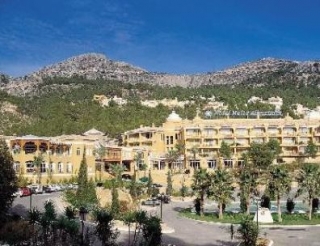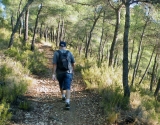The beach is an ideal attraction to be able to disconnect from the daily routine and take the opportunity to do some active tourism. When we are fed up with pollution, work or stress, we look for a place with the sea, where we can relax, where we can forget about everything. The coast provides us with all the relaxation we need and makes us return to work with renewed energy.

We choose warm places, like the southwest coast of Spain. Some prefer to combine those hours of peace and tranquility during the day, with a few moments of partying until the wee hours of the morning; and others, on the other hand, look for that long-awaited restlessness during the rest of the year. Alicante is a coastal area that could fit more with the first type of people that we have described, but the truth is that its surroundings offer a series of alternatives for all tastes.
300,000 inhabitants for a city that combines modernity with classicism, nature with large hotel buildings, which are the symbol of the economic awakening of our country. But, equally, it has a long history that dates back to nothing more and nothing less than the third millennium BC.
We arrived very early in the city and immediately began to notice that heat so different from what we are used to. The site that Alicante occupies today, to the west of the old town, was the neighborhood of Benalúa in which, for a century, Roman remains have been appearing and in addition, near the Murcia railway station, an inscription appeared dedicated to Marcus Aurelius and Commodus for the Municipality of Lucentum, which is the original name of the city.

In the second half of the 8th century, the settlement of a contingent of Arabs, Syrians and North Africans was located in the country estates at the foot of Mount Benacantíl, on whose summit there had already been a small fort for some time. From this primitive early medieval establishment, what developed over the centuries would become the current city, which in the 11th century had a mosque with a pulpit, according to the testimony of Al-Edrisí, and in later times it will be an important port for the export of cordage. esparto grass and soda.
Later it would also export wines and in the 18th century the Alicante port had its heyday. And already in the 18th and 19th centuries the growth of the commercial importance of the city became noticeable and thus managed to become, in 1833, the head of the newly created province. A witness that transcends our contemporary era, in which it has managed to find a place in the list of unavoidable places for everything. traveler.
What, of course, we couldn't miss was a first walk through the Canalejas Park, the oldest surviving park. But the most popular of the Alicante promenades is without a doubt the Explanada de España, located on the old port pier, it was built according to a project drawn up in 1867 by the architect José Guardiola Picó.

But our goal that day, after eating a magnificent paella in a restaurant on the seafront, was none other than to visit San Juan Beach, which, from north to south, is the first of the beaches we find. Wide, five kilometers long and considered one of the best in all of Spain for extension, care and services.
This beach links to the north with El Campello, where there are small but fantastic coves and a beach that is also characterized by its care and services. We didn't know which one to choose to do something really exciting: windsurf. Since we had no experience, some of my travel companions and I had to take a small learning class on the subject.
At night we decided to go out to enjoy the Alicante night and we realized that the port is of great importance, as it is a great tourist center, full of shops, restaurants, cafes and, of course, boats.
The next day we woke up with the intention of exploring the area again and after approaching the cultural destinations that are a must-see in Alicante, such as the Church of Santa María, the Museum of the Aseguradora or the San Nicolás Cathedral, built since the beginning of the 17th century, we toured the Campoamor Market from end to end, located near the Plaza de Bulls. What we were able to observe and buy, since we could not contain our desire to take everything, was an extensive leather goods store with artisan products from the area.

And our visit would end with a greeting to the Santa Bárbara Castle, located at the top of Benacantil, above the sea. From there we could see the city of Alicante, which from ancient times had the character of a military fortress, built by the Arabs, later passed into the domain of the Castilians, Aragonese, French, English, Austrians and Bourbons.
Of course, the best culmination for our trip, admiring a beautiful postcard of the city, there is nothing better than that, except, of course There is, the paella. We will repeat again.












